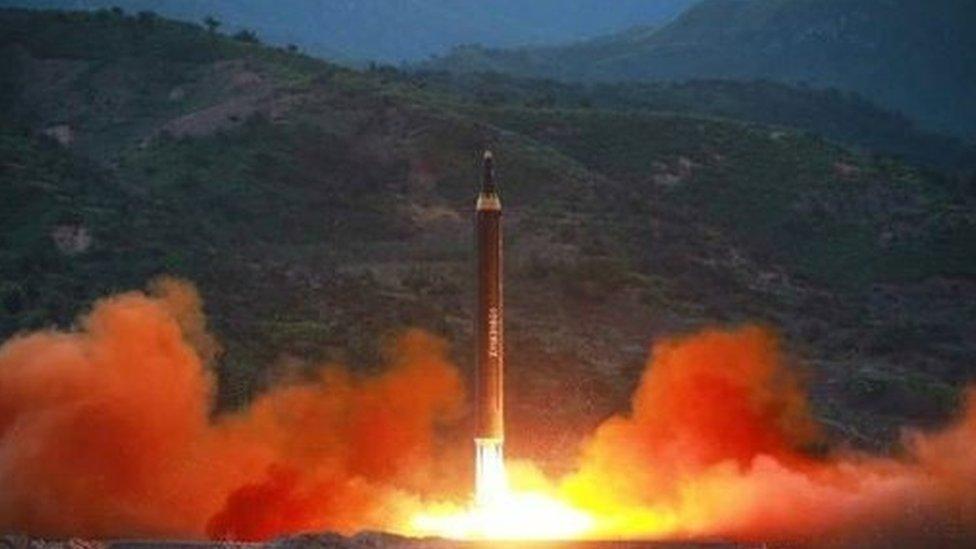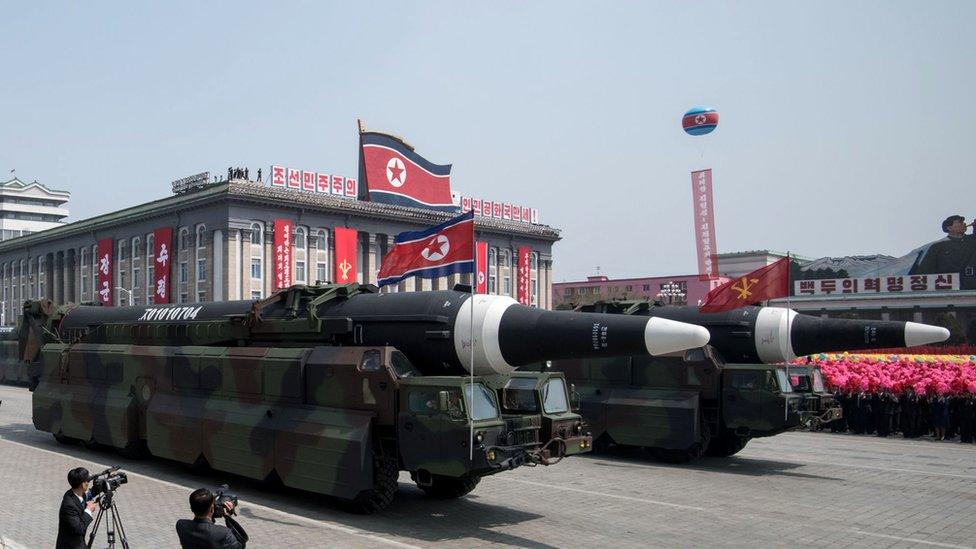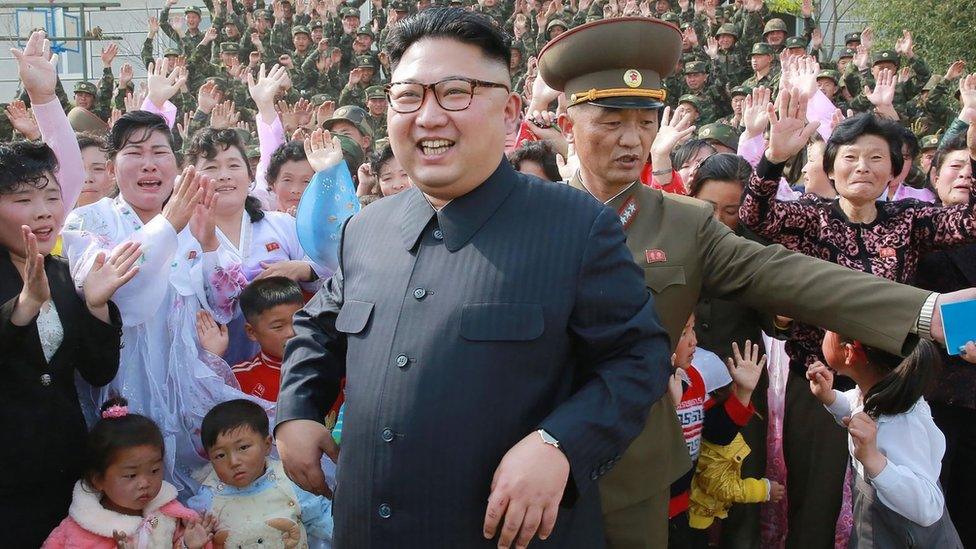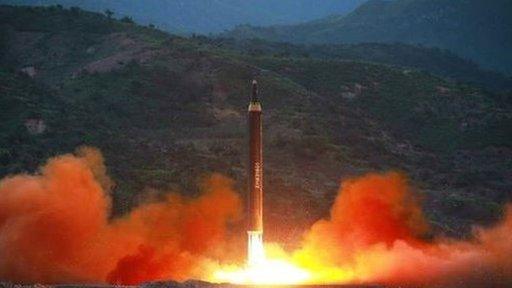What do we know about North Korea's new missile?
- Published

North Korea has said that the rocket it fired early on Sunday, was a new ballistic missile called the Hwasong-12. Defence expert Melissa Hanham explains what it tells us about Pyongyang's military strides.
Sunday's missile launch was a successful one and it demonstrated North Korea's longest-range nuclear-capable weapon yet.
Accompanying photographs showed it to be the same missile on parade last month at a massive military parade to mark the birth anniversary of North Korea's founding father Kim Il-sung.
Current leader Kim Jong-un was on-site according to photos released from North Korean state media KCNA and Rodong Sinmun.
In the hours afterwards, the statistics of the launch perplexed some observers, even to the point of questioning the data.

This unidentified rocket from last month's parade is thought to be the Hwasong-12
With tensions high, US Pacific Command was careful to categorise the flight as "not consistent with an intercontinental ballistic missile", which is - in short - one which could reach the US mainland.
One step further
This "mystery" missile is now revealed to be a powerful intermediate range missile, which North Korea claims can deliver a large and heavy nuclear warhead.
This vague statement leaves the door open to a range of possibilities, including that North Korea has not been able to make a compact warhead, or even that a new warhead will be revealed in the future.

Kim Jong-un on has pushed his country's rocket programme to new heights
North Korean state media said the missile had been launched over the country and into the sea east of the Korean Peninsula 787km (489 miles) away from its launch site near Kusong. It reached an altitude of 2,111.1km according to KCNA.
These figures fit approximately with statements made by both American and Japanese officials monitoring the situation.
While unusual, this sharp trajectory with an extremely high altitude allowed North Korean scientists to test the range of the missile without directly flying over any neighbouring countries.
The altitude would also allow the North to test the atmospheric re-entry vehicle under the extreme heat, pressure and vibration. The KCNA noted both facts in its public statement on Monday.


This "lofted" trajectory would be equivalent to over 4,500km if launched at a standard trajectory, putting US bases in Guam well in range.
It is indeed the longest-range missile North Korea has ever tested (aside from its space launch vehicles).
Deeply disturbing
Photographs indicate the Hwasong-12 to be a single stage, liquid-fuelled rocket, which would be unusually inefficient at this range due to the weight of the frame, fuel and oxidisers.
One possibility is that the body of the rocket is intended to be one part of a larger multi-staged intercontinental ballistic missile (ICBM) capable of reaching well into the US mainland.
In this way, North Korea can make iterative progress towards an ICBM without immediately crossing Trump's red line.
The missile launch, occurring just days after the new South Korean President Moon Jae-in took office, is deeply disturbing to many observers.

North Korea has tested many rockets in recent weeks, including this multiple launch in March
Missile testing under Kim Jong-un increased dramatically compared with his father and grandfather's programmes.
This test marks the 10th test of 2017, and this particular missile shows a greater range than any other tested in its military programme.
South Korea's new president has espoused dialogue with North Korea, and is now forced to take a tougher line just days into his administration.
So once again North Korea, with its rapidly advancing missile technology and the decline in relations with its neighbours, including China, has left diplomats scratching their heads.
Melissa Hanham is a Senior Research Associate in the James Martin Center for Nonproliferation Studies at the Middlebury Institute of International Studies in Monterey, California, USA.
- Published15 May 2017

- Published14 May 2017

- Published14 May 2017
